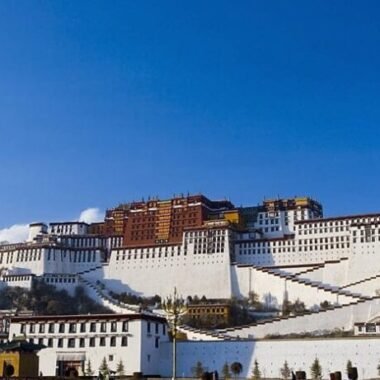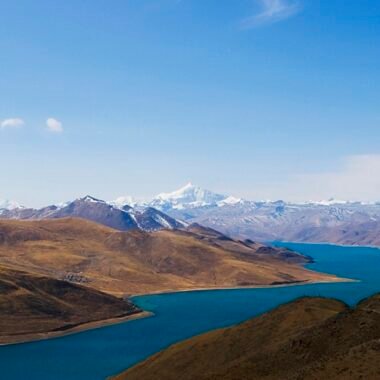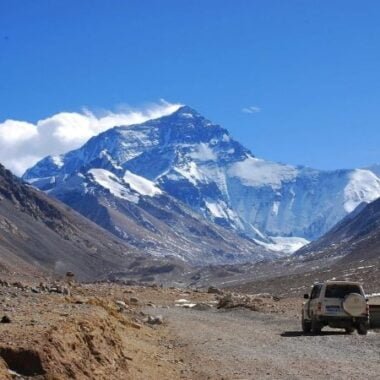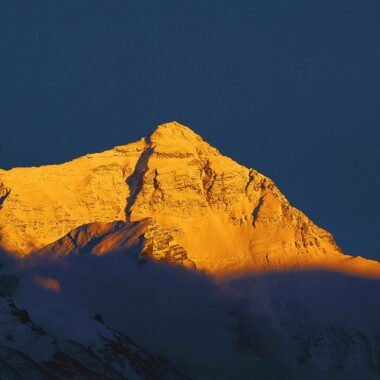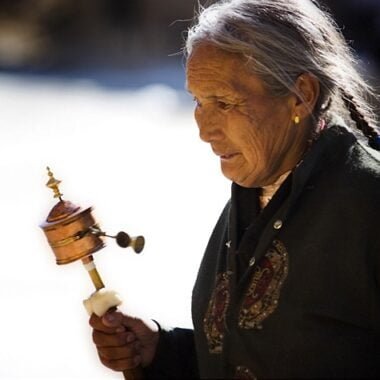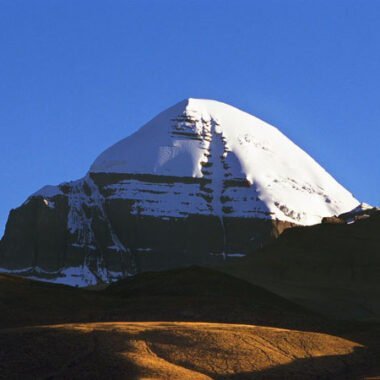Simi La Pass: Whe Prayer Flags Dance with the Wind – A Sacred Gateway in Tibet
Introduction At 4,350 meters, Simi La Pass is more than a mountain crossing—it’s a portal where Earth meets sky, and human…
Introduction
At 4,350 meters, Simi La Pass is more than a mountain crossing—it’s a portal where Earth meets sky, and human prayers ride the Himalayan winds. Connecting Lhasa to Gyantse, this high-altitude saddle erupts in a tempest of fluttering prayer flags, their kaleidoscopic hues clashing against barren peaks. For travelers, Simi La offers a visceral introduction to Tibetan spirituality, woven into every gust and glacier. Here’s how to walk its sacred ground with reverence.
The Scene: A Hurricane of Color & Faith
First Glimpse: A Chromatic Explosion
As your vehicle labors up hairpin bends, the pass reveals itself: thousands of prayer flags—crimson, azure, gold, jade—stretch like celestial bridges between iron-gray peaks. They form a labyrinth of devotion:
– Horizontal Lungta (Wind Horse) flags link cairns, printed with sacred mantras and galloping steeds.
– Vertical Darchor flags spear the ground, their vertical scripts reaching toward Mount Nojin Kangtsang (7,191m).
Wind whips the fabric into a deafening roar, as if the mountains themselves are chanting *“Om Mani Padme Hum.”*
Sacred Geometry: Why Flags Fly Here
Tibetans believe Simi La’s relentless winds carry prayers to the gods. Each flag’s position is deliberate:
– Blue: Sky – symbolizing wisdom.
– White: Air – for compassion.
– Red: Fire – embodying life force.
– Green: Water – harmony.
– Yellow: Earth – stability.
Immersive Moments: Becoming Part of the Ritual
1. Dawn’s Golden Hour:
Arrive at sunrise (6–7 AM) when alpenglow sets the flags ablaze. Watch pilgrims toss barley flour (*tsampa*) into the wind, their chants swallowed by the gale.
2. Flag Renewal Ceremony:
If visiting during Losar (Tibetan New Year), witness locals replacing faded flags—old ones are burned, releasing prayers as smoke.
3. Silent Contemplation:
Sit on a cairn. Feel the flags’ shadows flicker over your face, the air thin but electric. A nomad might press a dried yak cheese into your hand, nodding wordlessly.
Unique Charms: What Sets Simi La Apart
– Accessibility: Just 2.5 hours from Lhasa, no trek required.
– Photographic Drama: Flags contrast starkly against the desolate, Mars-like landscape.
– Cultural Crossroads: Mingling of truckers honking through the pass and pilgrims spinning handheld prayer wheels.
Essential Etiquette: 7 Rules for Sacred Ground
1. Never Step on Fallen Flags: Faded flags on the ground hold spent prayers; stepping on them insults the gods.
2. Circumambulate Clockwise: Follow pilgrims’ path around flag clusters.
3. No Flash Photography: Startles elderly pilgrims; use natural light.
4. Offerings Only: Place coins or grains on cairns, never trash.
5. Dress Warmly & Modestly: Cover shoulders/knees; temperatures plummet suddenly.
6. Respect Altitude: Move slowly; the pass sits 1,000m higher than Lhasa.
7. No Graffiti: Carving initials on rocks angers mountain deities (*yul lha*).
Pro Tips for an Unforgettable Visit
– Best Time: May–Oct (avoid July–Aug monsoon mudslides).
– Health Prep: Chew coca leaves (sold in Lhasa) or take Diamox 24h pre-visit.
– Guided Insight: Hire a Tibetan driver-guide (¥500/day) to explain flag symbolism.
– Pack Smart: Windproof jacket, sunglasses (UV is brutal), and lip balm.
Beyond the Flags: Hidden Gems Nearby
– Karola Glacier: 30-min drive west; touch (metaphorically) a crumbling ice giant.
– Yamdrok Lake: Detour south to Tibet’s turquoise soul (permits required).
– Nomad Tea Stalls: Sip butter tea with herders at the pass’s eastern slope.
Why Simi La Stays with You
Simi La is no Instagram stop. It’s a place where faith becomes tangible—where threads of silk hold a thousand hopes, and the wind carries what words cannot. As you descend toward Gyantse, the flags’ roar fades into a whisper, but their colors stain your memory like ink on snow.


